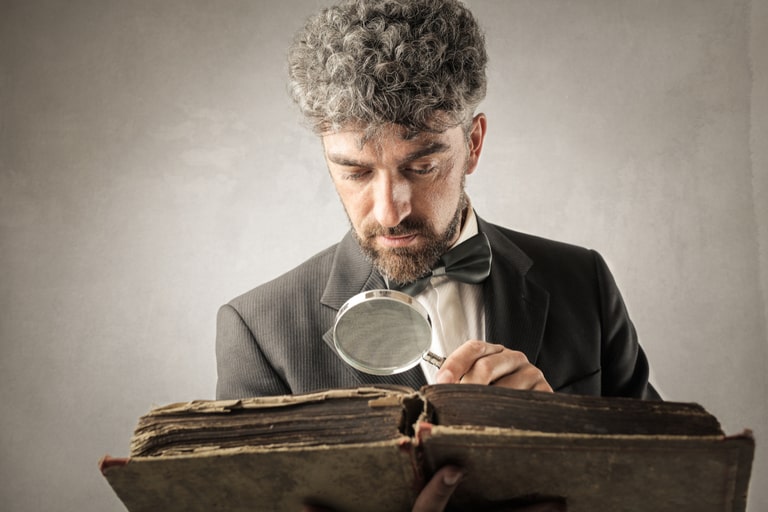Rita Chin, University of Michigan
History is often seen as a lonely discipline. And this idea contains a kernel of truth: when historians have the chance to research and write, they primarily do so alone. But this image hardly corresponds to the lived experience of academic historians, who today are required to work in collaborative contexts like graduate student training, departmental service, fellowship award decisions, faculty governance, and conference program committees. Despite this disconnect, most doctoral programs continue to train students as if their careers will hew to the lone scholar model.
But what would it look like, my colleagues at the University of Michigan and I wondered, if we took a different approach? What if we designed a graduate course that accounted for the conditions of the job market and history as a discipline? What if we taught students how to undertake the work of historical scholarship in a collaborative manner that more closely resembles the way labor is organized in today’s society, both inside and outside of academia?
Finding answers to these questions was among the most challenging tasks of the faculty and graduate student working group that I led for the U-M history department. Our purpose was to develop priorities and initiatives around what the AHA calls “career diversity.” This effort strives to provide history graduate students with crucial skills—such as communication, collaboration, digital literacy, quantitative literacy, and intellectual self-confidence—that will help them compete for academic jobs as well as expand their career opportunities. Our group understood career diversity as a moral imperative for our department and our discipline. And we hoped that our recommendations and experimental programs might transform the way we train graduate students in history at the University of Michigan.
So, how would we teach collaboration in a discipline that measures success on the basis of single-authored articles and books, hidebound by a template of solitary reading and writing? We started with the idea of a team-based project that would show students how to approach historical research, analysis, and writing collectively. We knew that students generally choose courses with the goal of deepening their intellectual expertise. It would be no easy task to identify common research topics that satisfied all members of a student team. But what if we let an outside institution determine the intellectual content of the project?
Jeffrey Veidlinger, a faculty member in our group, knew that the United States Holocaust Memorial Museum (USHMM) was seeking help with Experiencing History: Holocaust Sources in Context, a digital learning tool geared toward the college classroom and featuring primary sources. Intrigued at the collaborative possibility, we proposed a graduate research seminar in which teams of students would curate new primary-source collections for the Experiencing History platform.
How would we teach collaboration in a discipline that measures success on the basis of single-authored articles and books, hidebound by a template of solitary reading and writing?
Working with the Experiencing History team of Leah Wolfson, Emil Kerenji, and J. Luke Ryder in January 2019, Veidlinger and I launched a pilot research seminar (dubbed a graduate HistoryLab) in partnership with the USHMM. Ten students enrolled, including historians of Europe and the United States and a few literature students; only two arrived with formal training in Holocaust history. With the Experiencing History team, we identified two broad collection areas, “American Support for Nazism” and “Appeal of Fascism in Europe.” The course began with a few weeks of collective reading and discussion in the manner of a traditional graduate course. But unlike any other offering in our curriculum, our two teams of students were simultaneously developing proposals to define the specific scope and key themes for their collections. By the third week, they presented this material to our Experiencing History partners, and after a month, they pitched their proposals to the USHMM stakeholders, a group that included the museum’s directors of applied research, academic programs, educational initiatives, and digital media. With the stakeholders’ approval secured, team members embarked on a primary source hunt that would illustrate the key themes of their collections. Class meetings frequently included Experiencing History experts attending by video call, and involved intense back-and-forth on each group’s work. Every student was expected to defend their team’s choice of sources and collectively authored descriptions of the documents—to each other, the other team, two faculty instructors, and the museum staff.
In mid-March, we took a class field trip to Washington, DC. The teams presented their projects to the USHMM stakeholders, laying out their refined collection descriptions and sample document write-ups. They met with the Experiencing History experts, toured the museum’s exhibitions, and used the museum archives. Back in Ann Arbor, students finalized their choice of documents, wrote item descriptions, and drafted introductory essays for each collection as a whole. The students took their work into the field: they cajoled U-M undergraduates into reading the introductory essays and responding to a survey to assess how effectively the teams had communicated the collection themes.
In 14 weeks, our graduate students developed two bodies of Holocaust sources, from concept to fully curated collections, and “product tested” them with the target audience. The museum professionals made final editorial decisions. But after a semester’s worth of labor, two new collections researched and curated by our students—“Nazi Ideals and American Society” and “Everyday Encounters with Fascism”—went live on the Experiencing History digital platform. The pilot proved so successful the museum has agreed to reprise the course with U-M in 2020.
Students, faculty, and the Experiencing History team all gained insights through the process of collective discussion and critique.
The experience of teaching collaborative research was a revelation on many levels. Our initial motivation grew out of a serious reckoning with the academic job market and a commitment to equipping graduate students to compete effectively in multiple job sectors. We wanted to provide them with the hands-on experience of collaboration—perhaps the defining feature of the contemporary workplace, but one that the solitary discipline of history all but ignores. Our experiment realized this goal resoundingly: students organized meetings apart from class time; determined a division of labor for each task; developed a system to track progress; wrote documents collectively; prepared presentations and assigned speaking roles; provided feedback on sources and writing; addressed disagreements and conflict; and shared responsibility for the products their team created. “This course helped me develop my collaborative research skills,” reported Slavic languages and literature graduate student Michael Martin. “I had no idea how the fundamental aspects of research, such as defining a research question or establishing a justification for material we had gathered, could be complicated by working with other people.”
As part of our effort to help students imagine careers beyond the professoriate, we also wanted to expose them to an institution outside the academy that explicitly values and relies upon historical expertise. Here, the USHMM proved an ideal partner because its mission is grounded in historical research that aims to reach the general public. During the semester, students had to communicate with multiple audiences—from specialists in Holocaust history to college students (the key targets of Experiencing History)—and to modulate their message accordingly. But collaborating with an institutional partner introduced other experiences unfamiliar in an academic setting: a work schedule with deadlines of one week instead of an entire semester; an expectation of brevity, with source descriptions of no more than 300 words; a need to apply research, analysis, and synthesis skills to unfamiliar topics. Above all, students relished the prospect of creating historical work that exists out in the world and will be used by thousands of students and instructors around the globe. Émilie Duranceau, a history PhD student focusing on Germany and Nazi racial law, assessed the course’s value as “an incredible opportunity” that resulted in “an end product online, accessible for all to see and use.”
But if our original goal had been to broaden students’ career horizons, this pilot also produced some unexpected lessons. History graduate student Lediona Shahollari, a Balkan expert, pointed out that the HistoryLab helped sharpen her “analytical, research, and writing skills” more generally. “The professors and fellow graduate students [became] both colleagues and mentors,” helping her “navigate issues that commonly emerge with the process of research.” Indeed, as the name promised, our classroom functioned as a kind of a laboratory, in which the normal dynamics of faculty-as-experts and students-as-learners were scrambled. Students, faculty, and the Experiencing History team all gained insights into the collections’ key issues from each other through the process of collective discussion and critique.
This collaborative opportunity, moreover, provided a platform for us faculty instructors to model, perform, and reflect upon the real work of “doing” history—weighing the interpretive value of one document over another, making sense of a source in relation to other research, developing convincing interpretations. Rather than expecting students to infer the logics and skills embedded in historical scholarship, this experiment allowed us to walk our students through much of the research process step-by-step. For me, this was the biggest takeaway of our course: we were not just offering students a gimmicky opportunity to expand their career horizons or learn new skills for multiple job markets; we were actually teaching them how to be better, more self-conscious—and less isolated—scholars of history.
Rita Chin is Professor of History at the University of Michigan
Note: The views expressed in this article are the author/s, and not the position of Intellectual Dose, or iDose (its online publication). This article is republished from Perspectives on History under a Creative Commons license.



